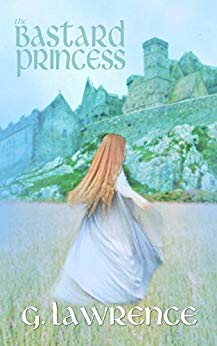James Burke’s big brother
Next week will see the publication of Fugitive, the latest of Paul Collard’s Jack Lark series. I call Jack Lark ‘James Burke’s big brother’ because both are a series of books about a British soldier, albeit Jack Lark is doing his soldiering half a century later than Burke. Like Burke, Lark moves around the world from war zone to war zone. Collard is more of a straightforward military history writer than I am and his battle scenes are brilliant and meticulously researched.
I’m marking the launch of Fugitive with an extended version of the review I wrote of his last book, The Lost Outlaw, for the Historical Writers’ Association.
The Lost Outlaw

Jack Lark has fought for the British in Crimea and India. He’s fought alongside the French Foreign Legion at the battle of Solferino and on both sides in the American Civil War. Now, though, he is facing a personal crisis. After a bullet nearly ended his life in the Civil War, does he still have what it takes to be a soldier?
There is a lot of existentialist angst at the start of this latest story, which really doesn’t suit Jack, who is not an overly reflective fellow. What gets him (and his readers) going is a good fight, but fortunately one comes along soon enough. When a beautiful, if clearly crooked, woman, finds herself on the wrong side of an ambush, Jack Lark finds himself forced back into action.
The temptation to fight was strong. He could feel the pressure building in his skull and in his chest, fear and desire mixing together to produce that peculiar, volatile cocktail that was more intoxicating than the strongest arrack or the most beautiful woman. The opportunity to reveal his talent was here and it was ready to be seized.
Jack agonises for almost a full two pages, but to the reader’s relief “he made his choice” and mayhem is duly unleashed.
The girl, Kat, turns out to be working for Brannigan, a waggon-train master who is taking thirty wagons packed with cotton from the blockaded Confederacy down into Mexico where they will be sold on to make their way to Europe. The cotton is, according to Vaughan, the businessman escorting the goods, “worth a king’s ransom”. Brannigan needs gun-slingers to defend it from bandits and Jack Lark is offered a job.
So we see a very different Jack Lark from in the previous books. Although the convoy is run with near-military discipline, he is no longer a soldier. He finds himself dealing with an intriguing mix of different characters. Brannigan is a sadistic bully, but a brave and competent leader. Vaughan is an enigmatic figure, constantly hinting at plots, but unwilling to commit himself to taking sides on anything. There is conflict with Brannigan’s right-hand man, Adam, jealous of Lark’s sudden arrival and there is the mysterious, but deadly Kat. I do particularly enjoy Kat, whose refusal to fall gratefully into our hero’s arms makes a refreshing change in this genre. I suspect we won’t meet her again after this book, which is a shame.
Along the way we meet other classic characters of the Old West: Dawson, the cavalry captain whose job is to keep the route safe, but who is not above taking a bribe to supplement his pay; and Santiago, the Mexican bandit. It would be easy for these to be mere caricatures, but Collard fleshes them out enough to make them real people. In the end, though, the story is inevitably episodic. There is a fight here, a betrayal there, a double cross somewhere else. There is a climactic defence of an old building, loosely based on a famous action fought by the French Foreign Legion (though you’ll have to be a dedicated military history buff to recognise it), but a hopelessly outgunned Confederate patrol is inevitably massacred almost to the last man and the very inevitability of the process detracts somewhat from the drama. Lark, of course, survives – just one more occasion on which he shows the kind of superhuman resilience that belongs rather more in fantasy than historical fiction. Still, this is Lark’s eighth outing and by now he has already demonstrated that he is no ordinary chap. In any case, if a little thing like being left naked and bound in a desert is going to stop him, then what will we do for the rest of the book?
In the pauses between the violence, we learn some fascinating facts about the economics of the War Between the States and there are interesting insights into life on the trail, but this is, first and foremost, an action thriller. As such, it definitely delivers. If you already enjoy the Jack Lark books, you will probably enjoy this one, but if you haven’t read any of them before you are best starting with one of the earlier, more straightforwardly military, stories.








